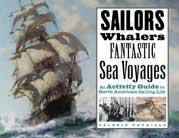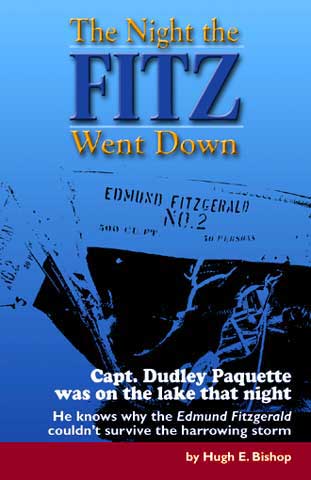The Bookshelf
Sailors, Whalers, Fantastic Sea Voyages
By Valerie Petrillo
 |
Children are fascinated with sailing ships, lighthouses, whaling,
shipwrecks, and mutinies, and these 50-plus activities will provide them
with a boatful of fun. This activity guide shows kids what life was like for
the greenhands, old salts, and captains on the high seas during the 19th
century: aboard square-riggers, clippers, whalers, schooners, and packet
ships. Life aboard ship was an exciting subculture of American life with its
own language, food, music, art, and social structure. Children will learn
that many captains brought their wives and children aboard ship, and that
kids who learned how to walk at sea often found it difficult to walk on dry
land. The book begins with the China Tea trade in the late 18th century and
ends with the last whaler leaving New Bedford in 1924. Kids will create
scrimshaw using black ink and a bar of white soap; make a model lighthouse
using a bike reflector, an oatmeal box, and a plastic soda bottle; and paint
china with traditional designs using a blue paint pen and a basic white
plate. Included are additional simple activities requiring common household
objects that are sure to please busy parents and teachers alike.
Sailors Whalers Fantastic Sea Voyages is published by Chicago Review
Press and is available at www.tidemarkpress.com for $39.95
The Night the Fitz Went Down
By Hugh E. Bishop
 |
For 30 years as an officer in Inland Steel Company’s shipping fleet, Captain Dudley J. Paquette served as mate and captain on boats plying their rounds on the Great Lakes. Captain Paquette (retired, 1980) had ample opportunity to observe and record the tempestuous nature of the Great Lakes. He became a keen weather forecaster who is described by one former mate as “pretty much a heavy-weather captain who always tried to find the smoothest ride possible.”
With schedules to keep and a sense of pride in delivering his cargoes safely
and on time, Captain Paquette analyzed the weather data and ordered his SS
Wilfred Sykes out of safe anchorage in Thunder Bay, Ontario, on the
afternoon of November 10, 1975. Knowing that he would encounter heavy seas,
the captain admits that even his widely recognized expertise in weather
forecasting underestimated the severity of the storm that sank the Edmund
Fitzgerald later that evening.
By sailing into those treacherous seas, this weather-savvy captain was
uniquely positioned to observe and report on the magnitude of the storm, as
well as to formulate his own opinion about the sinking of the Fitzgerald.
His observations about the November 9-10, 1975, “storm of the century” and
analysis of the data reveal for the first time what may have caused the
wreck of the Fitzgerald. This book will change your mind.
The Night the Fitz Went Down is published by Lake Superior Port Cities
Inc. and is available for $14.95.
All contents are copyright (c) 2007 by
Northern Breezes, Inc. All information contained within is deemed reliable
but carries no guarantees. Reproduction of any part or whole of this
publication in any form by mechanical or electronic means, including
information retrieval is prohibited except by consent of the publisher.